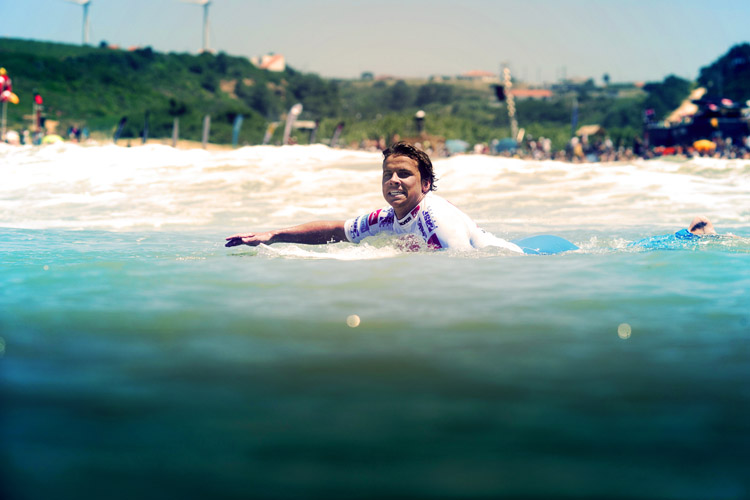Improving your swim strokes means catching more and better waves. Paddle power is not a technique. It is the result of a quality fitness workout.
Have you ever felt out of breath in the early minutes of a normal surf session? Are your arms in pain? Don't worry - you're definitely not alone in the line-up.
Whether you're escaping from a freak set or paddling for a small, mushy summer wave, you'll need well-trained arms and lungs.
And don't forget to maintain the correct body positioning on the surfboard.
Strong strokes can be built, no matter how old you are. Have you got a standup paddleboard (or SUP)?
You should consider one, as using it will strengthen shoulders, biceps, and triceps. That's endurance paddling training.
Do you live near a swimming pool?
Schedule a one-hour intensive training twice a week, with short and fast sprints. With time, you'll be generating more speed per stroke.
Extend your arm, open your torso, and focus on a determined, deep stroke with full physical commitment.
Space Between Fingers
Fingers are decisive. Although you might initially feel that closed fingers are more effective, science has a different winning formula.
Researchers have proved that the optimal width between fingers is 20 to 40 percent.
Timing is also critical.
Make sure your non-paddling arm is not causing drag. As for your paddling arm, bend the elbow, lift the chest, and push the body up.
You'll notice that your hip will be almost touching your hand by the end of each stroke.
With your body perfectly aligned on the surfboard, you'll soon start to feel that you're paddling faster, one stroke at a time, and steadily developing muscle memory.
When the wave comes, prepare for an extra boost, maintaining balance over the board and performing a down-up chest movement in the critical pop-up moment.
If you lift the chest too much, the surfboard's tail will sink into the water, causing drag.
Finally, if you're surfing in small wave conditions, take an extra paddle before popping up. Don't do this in large surf; otherwise, you'll probably be too fast for the steep drop.
Open and closed-chain exercises and bodybuilding-type workouts will be useful for extraordinary results if you really want to win all paddle battles against the fittest surfers.
Take a look at more surf training exercises.
